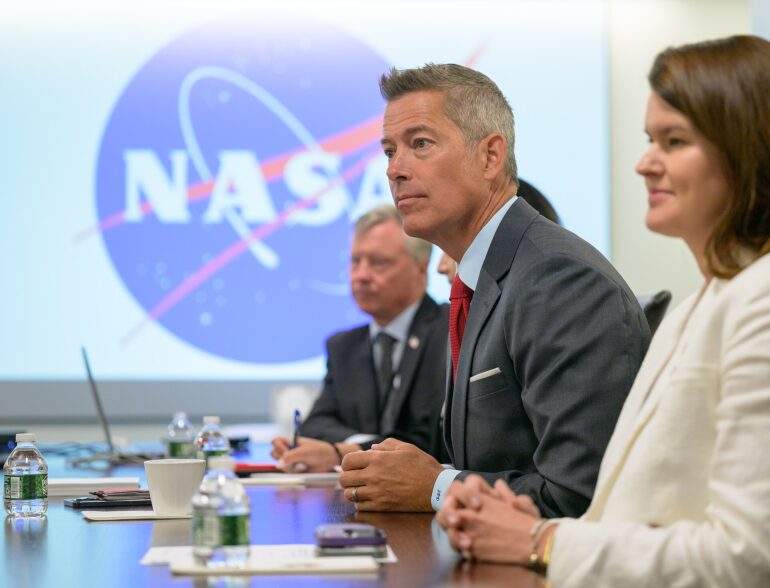In a bold step toward reclaiming American leadership in space, the Trump administration is preparing to announce plans to build the first-ever nuclear reactor on the moon — a decisive move aimed at beating China and Russia in what officials are calling “the second space race.”
According to documents reviewed by Politico and a senior NASA official, NASA Interim Administrator Sean Duffy will later this week unveil a sweeping directive that will fast-track efforts to establish American nuclear energy capabilities on the lunar surface by 2030.
The project, part of a broader national strategy, underscores the Trump administration’s belief that space is once again a proving ground for global power and technological superiority.
The United States had previously aimed to deploy a lunar reactor sometime in the early 2030s. Now, under Duffy’s directive, NASA will seek proposals from private industry to launch and land a working reactor by the end of the decade — a move described by one NASA source as crucial to ensuring U.S. dominance beyond Earth.
“The first country to have a reactor on the moon could ‘declare a keep-out zone which would significantly inhibit the United States,’” reads the internal directive obtained by Politico — a stark warning about the potential consequences of falling behind in space infrastructure.
The initiative also includes a mandate to accelerate the replacement of the aging International Space Station, select a lead agency official for the moon base effort, and obtain feedback from the aerospace industry within 60 days — a timeline that reflects the urgency of the administration’s strategy.
While nuclear propulsion was not specifically prioritized in the most recent NASA budget, officials emphasized that the technology remains a critical part of America’s space future.
“That wasn’t because nuclear propulsion is seen as a non-worthy technology,” the anonymous NASA official told Politico, pushing back on any suggestion that it had been sidelined.
Driving the renewed urgency is the growing competition from authoritarian regimes.
China has publicly declared its aim to land astronauts on the moon by 2030, while both Beijing and Moscow have reportedly explored joint plans to build a lunar nuclear reactor by the mid-2030s. The Trump administration appears determined to ensure the United States stays ahead of that timeline.
By harnessing American innovation and leveraging private-sector expertise, the plan signals a return to a muscular, unapologetic space policy that puts U.S. interests — and American exceptionalism — first.
With nuclear power potentially unlocking permanent lunar habitation, deep-space exploration, and military security, the Trump administration is making clear that the final frontier is not just a scientific endeavor — it’s a national imperative.
[READ MORE: Vance Mocks Left’s Meltdown Over Sydney Sweeney Ad]





